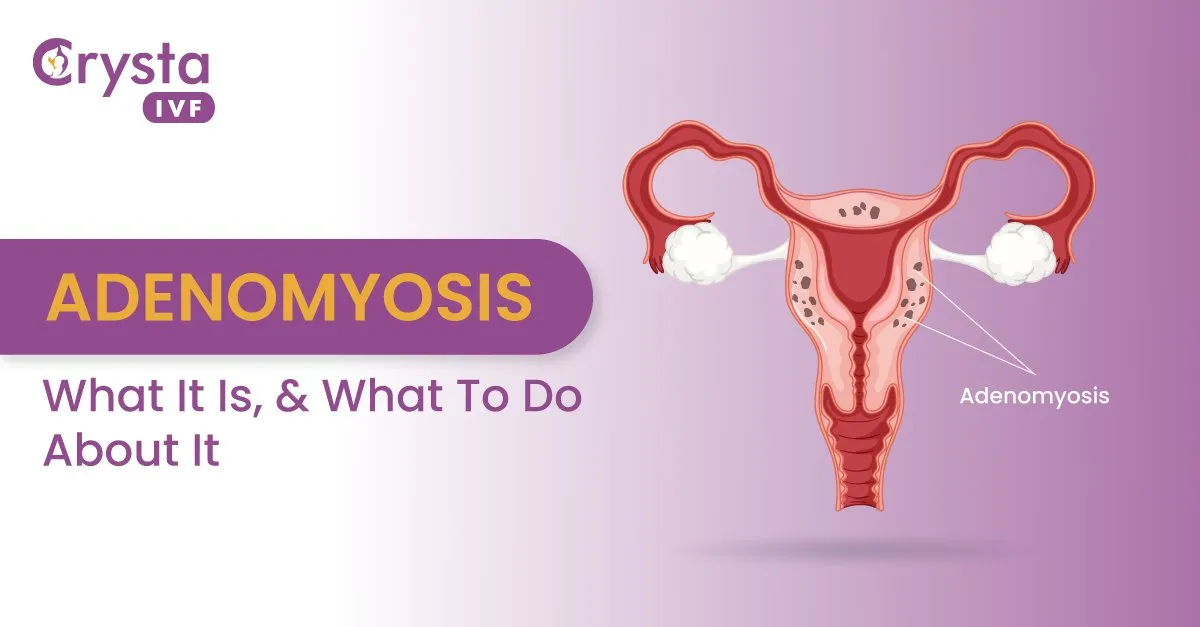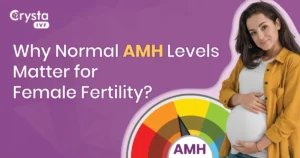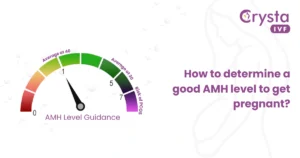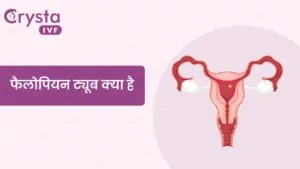Adenomyosis is among the common health condition that affects millions of women worldwide. Often women with the condition aren’t aware of it because of the less obvious symptoms.
However, adenomyosis can be responsible for life-long female infertility and can also cause a higher risk of miscarriage for those who are pregnant and have this condition.
Adenomyosis symptoms can negatively affect your lifestyle. It is seen that the condition typically occurs in a female of reproductive age, most commonly between the ages of 35 and 50.
Women with the condition have experienced heavy bleeding along with pelvic pain. While adenomyosis can be painful and debilitating, treatments are available to help manage your symptoms.
Keep reading to learn more about this condition and what you can do to find relief.
What is Adenomyosis?
Adenomyosis is a condition that can cause pain and bleeding during menstruation. The symptoms of adenomyosis include heavy or prolonged menstrual bleeding, abdominal pain, and pelvic pain.
Adenomyosis occurs when the inner lining of the uterus (the endometrium) breaks through the muscle wall of the uterus (the myometrium). This can happen when the tissue that normally lines your uterus grows into your uterine muscles. While it is not cancerous, it can be painful and may cause problems with fertility.
Adenomyosis symptoms
The symptoms of adenomyosis can be similar to those of endometriosis, which is another condition that affects the uterus.
- Heavy and painful periods
- Painful menstrual cramps
- Bleeding between periods
- Inflammation of the uterus
- Uncomfortable urination
- Blood in the urine
- Difficulty getting pregnant
- Pain during intercourse
- Peripheral nerve numbness or weakness
- Pain in the pelvic area
- Prolonged periods
Symptoms can be mild to moderate, spending upon the severity of the condition. In some cases, there can be no symptoms.
Adenomyosis Vs. Endometriosis: Similarities & Differences
Endometriosis and adenomyosis are two uterus disorders that can cause pain and heavy menstrual bleeding. Doctors often referred to adenomyosis as the “sister diseases of endometriosis” because they share similar symptoms and causes.
The main difference between these conditions is where the endometrial tissue actually grows. In adenomyosis, the endometrial tissue grows into the uterus’s muscle wall. This can cause the uterus to enlarge and may lead to heavy bleeding and pain during menstruation.
While in endometriosis, the tissue grows outside the uterus, similar in makeup to the womb’s inner lining (endometrium). Endometriosis may grow outside your uterus, ovaries, tubes, and even on your bladder or intestines.
Treatment options for both conditions are available, ranging from less invasive such as medications & therapy to more invasive surgeries like Hysterectomy.
Common Causes of Adenomyosis
The exact cause of adenomyosis is not fully known. However, the condition commonly occurs in women with at least one pregnancy, endometriosis, and uterine fibroids.
Doctors and researchers have increasingly suspected various causes and factors contributing to adenomyosis.
This includes hormone imbalances, sex hormone receptors, Neuroangiogenesis factors, inflammatory molecules, etc.
- Due to past surgeries (like a cesarean delivery), an incision was made that caused the growth of endometrial cells into the uterine muscle.
- Uterine inflammation that occurs after childbirth
- Reproductive Hormone imbalance, including estrogen, progesterone, prolactin, and follicle-stimulating hormone (FSH) & luteinizing hormone (LH)
- The uterus or vaginal injuries
- Extra tissue in Adenomyosis may be present in a person before birth or may have grown during adolescence.
Does Adenomyosis Affect Fertility?
Women with the condition have seen low fertility rates, which may lead to infertility in some cases. Once pregnant, it may also cause a higher risk of miscarriages & preterm birth.
People with adenomyosis may also likely have endometriosis, which may distort reproductive organs and cause difficulty in conceiving.
The exact link between adenomyosis is not known. However, the condition may sometimes make it difficult to get pregnant for the first time or to have a second child. For that, you may require infertility treatments.’
How is Adenomyosis Diagnosed?
Ultrasound
In order to diagnose the condition, your doctor may carry out transvaginal ultrasound that involves sound waves to create images of the pelvic regions and reproductive organs. Ultrasound helps in determining the thickness of the muscle in the uterus.
Magnetic resonance imaging (MRI) Scan
The process uses a magnet and radio waves that help create high-resolution images of the internal organs. In this case, it is the uterus. MRI scan helps the doctor to suspect adenomyosis by showing the thickening of the space between the endometrium (lining of the uterine cavity) and myometrium.
Pelvic exams
Your healthcare provider will try to examine your pelvic region to know whether the uterus has gotten larger or more painful.
Treatment Options for Adenomyosis
While there is no cure for adenomyosis, there are treatments that can help ease symptoms. If you think you may have adenomyosis, talk to your doctor about the options available.
Medications
Anti-inflammatory medications may help control painful symptoms of adenomyosis by reducing the blood flow during the period. These medications may also help relieve severe cramps. Your doctor will prescribe suitable medicines and tell you how often you need to take them.
Hormonal Treatment
Hormonal treatment may help control estrogen, which is responsible for thickening the uterus wall and can worsen bleeding and cramping. Certain oral contraceptives, birth control pills, injections, progestin-only contraceptives, and gonadotropin-releasing hormone (GnRH) analogs may help manage adenomyosis.
Uterine artery embolization
A process to prevent arteries from taking blood to the affected area in the pelvic region. As the blood supply is discontinued, the adenomyoma narrows, and the symptoms and pains are reduced. Uterine artery embolization is generally used to treat uterine fibroids.
Hysterectomy
In some severe cases of adenomyosis, a hysterectomy can be carried out. Hysterectomy involves surgical removal of the whole uterus or a part of it, which means you won’t get pregnant again. Surgery is often considered the last resort and only used in severe cases where people agree not to plan to give birth in the future.
While hysterectomy is the only definitive cure for adenomyosis, it may not be suitable for a person who still wishes to get pregnant. In such cases, it’s better to talk with a fertility specialist to explore options, such as Assisted Reproductive Technologies (ART), that may help you conceive.
All Things Considered…
Adenomyosis is a benign condition that does not pose a threat to one’s life. However, its symptoms can be disruptive and painful. Heavy periods, cramping, and painful intercourse are all potential signs of adenomyosis.
Anyone who suspects they may have the condition should consult with their doctor. Although, the condition will go away when one reaches menopause. But, before then, several treatments can help ease symptoms.
A fertility specialist at Crysta IVF can help. Get a consultation today to explore your options, especially if you have the condition and still wish to become a parent.




